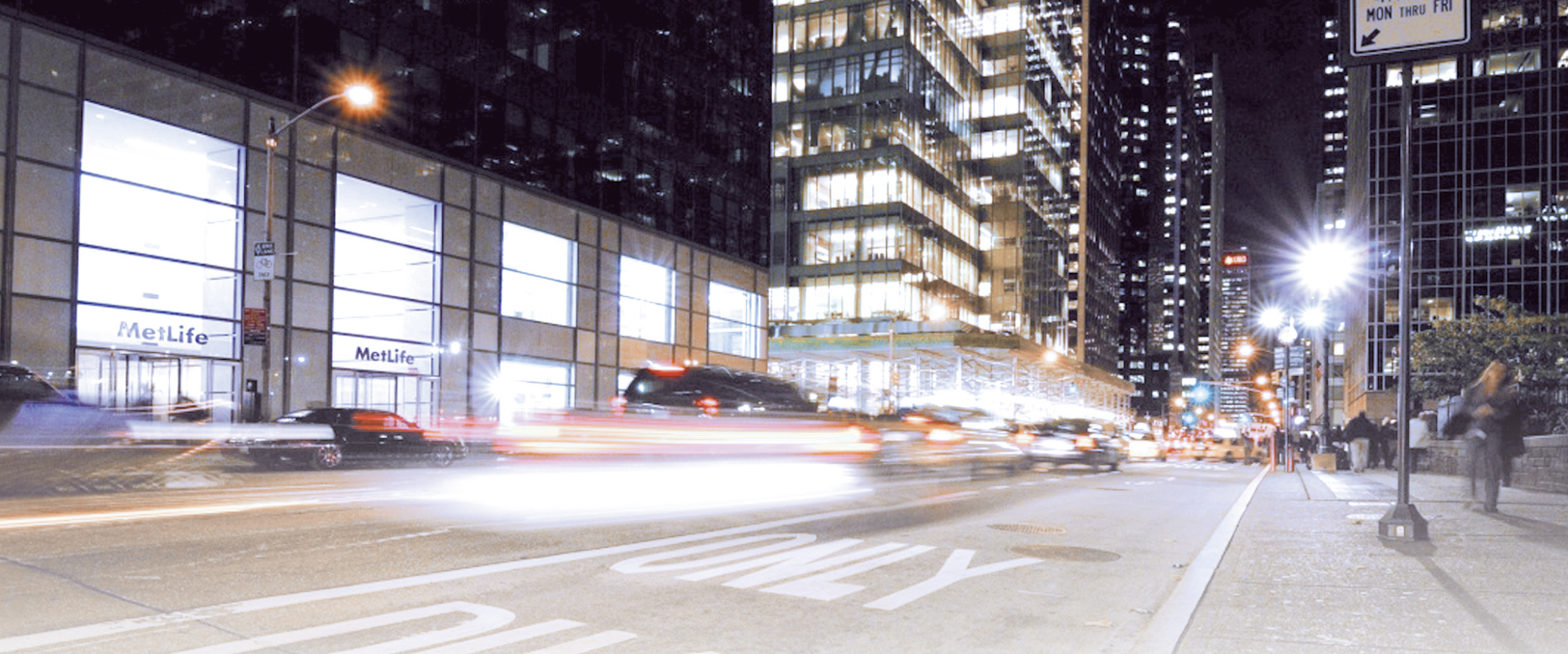
March 11, 2016
Residents of public housing developments helped shape, study, design and select locations for 400 units of additional lighting
Crime Lab New York to evaluate the effect of different amounts of lighting on crime reduction as part of the Mayor's Action Plan for Neighborhood Safety
NEW YORK — In partnership with residents from 40 public housing developments, Mayor de Blasio today announced a study that will be the first in the country to rigorously examine the effect of different lighting installation strategies on crime reduction. The results of this study will inform how the City makes future investments in permanent lighting, advancing the de Blasio administration's commitment to promote safe and strong neighborhoods through comprehensive and innovative strategies that extend beyond traditional law enforcement.
"We need to use every tool at our disposal to ensure that every New Yorker is safe," said Mayor Bill de Blasio. "By partnering with residents from these 40 developments on this rigorously evaluated study, the City will be able to understand precisely how different lighting strategies can reduce crime and create safer public spaces."
To shape this study - in which 40 public housing developments will receive 400 units of additional temporary lighting over the next six months - the City worked with residents to identify exterior locations within their developments that they felt were in most need of lighting at night.
The study will determine the effect of lighting on outdoor criminal activity, including an evaluation of the impact of varying amounts of additional lighting. The study will also survey residents to determine how lighting changes fears of crime or victimization, and how it affects neighborhood cohesion among residents. The study and lighting towers are funded with $5.56 million in City asset forfeiture money.

"When we think about deterring crime, we need to pursue a broad range of strategies beyond traditional law enforcement. A well lit street deters crime better than a dark alley, just as opportunities for work and play promote safety better than disadvantage and disconnection," said Elizabeth Glazer, Director of the Mayor's Office of Criminal Justice.
"Addressing crime in public housing requires a multi-tiered approach. As NYCHA moves to increase security cameras, install layered access doors and permanent light towers, and reimagine our resident security procedures, we must also examine how such measures influence the communal perception of safety. I commend the administration and City Lab New York for creating this innovative partnership to study the effect lighting can have on crime," NYCHA Chair and CEO Shola Olatoye.
The study announced today is part of the Mayor's Action Plan for Neighborhood Safety (MAP), a partnership between the Mayor's Office of Criminal Justice, the New York City Housing Authority, the NYPD and residents from 15 high crime public housing developments.
Since July 2014, MAP has been working in these 15 neighborhoods to comprehensively address conditions that inhibit or encourage crime, such as disadvantage, disconnection and physical disorder, strengthening neighborhoods in partnership with the people who live in them. The results of the overall MAP initiative thus far have been promising. Between Fiscal 2014 and Fiscal 2015, violent crime in the 15 MAP developments dropped by 11.2 percent.
As part of MAP's focus on improving the safety of public spaces, NYCHA is installing new and improved permanent lighting at all 15 MAP developments. It is also installing CCTV cameras and layered access control with $140 million in funding from the City Council and Speaker, the Mayor's Office and the Manhattan District Attorney's Office. NYCHA expects to complete installation of new lighting at all 15 MAP sites by the end of 2019.
The temporary lighting initiative announced today extends beyond the 15 developments. It will complement the efforts in the 15 MAP developments by rigorously determining the effect that different lighting approaches have on reducing crime. The findings gathered at the 40 NYCHA developments selected for the study will enable the City to better understand how to best scale up lighting projects beyond the 15 MAP developments.
"I grew up in New York City public housing and always remember feeling safe and secure in my surroundings. Today's public housing residents deserve to have that same sense of security in their homes. Early evidence suggests extra lighting can be an effective deterrent of crime, so this study should help the city evaluate how best to improve public safety. I applaud Mayor de Blasio for spearheading this initiative," said Congressman Eliot Engel.
"When I was District Attorney, I always recommended homeowners install outdoor lighting as a deterrent to burglaries, trespassing and other unlawful activity. Residents in city housing developments deserve the same preventive measures. I commend Mayor Bill de Blasio and Commissioner William Bratton for taking a scientific approach to determining best practices," said Congressman Dan Donovan.
"Public safety remains a top priority for New York City residents," said Congresswoman Yvette D. Clarke. "I am pleased to announce that seven public housing developments in the ninth congressional district have been selected to take part in the de Blasio administration's pioneering initiative to evaluate and to eventually reduce crime utilizing light. As part of the Mayor's Action Plan for Neighborhood Safety, I believe that this study will produce effective tools to protect our residents and to prioritize crime reduction where vulnerabilities exist. I look forward to partnering with the administration, the New York City Housing Authority, the New York City Police Department and most importantly residents, to strengthen and build safer communities."
"In the fight to keep our streets safe, we need an all-hands-on-deck approach. The unacceptable reality is that many of our public housing complexes suffer from disproportionately high rates of crime in part because of poor lighting in hallways, elevators and courtyards. It is my hope that this is a strong first step in a recalibrated effort to give public housing residents the safety and peace of mind they deserve," said Congressman Hakeem Jeffries.

"All New Yorkers have a fundamental right to feel secure in their homes and communities. Mayor de Blasio's new study on the effects of lighting on crime, a concern I regularly hear about from constituents, is an important step towards achieving this goal. I thank the Mayor, NYCHA Chair Olatoye, and NYPD Commissioner Bratton for their continued commitment to building safer and stronger neighborhoods throughout our city and look forward to reviewing the results of this study," said State Senator Brad Hoylman.
"A critical element of safety is being able to see what's happening and feel secure in your surroundings. This study will improve both of those dynamics for our South Bronxites. Representing the second largest NYCHA population in NYC, I support this innovative path ahead for us to work together to make our communities safer together. I commend Mayor de Blasio, Chairwoman Olatoye and my Tenant Association Presidents of Danny Barber and Jenny Cruz for standing up for the people of the 79th district," said Assembly Member Blake.
"Of all the possible improvements in NYCHA's security infrastructure, none is more critical to both the reality and feeling of safety than exterior lighting," said Council Member Ritchie Torres, Chair of the Committee on Public Housing. "I applaud the Mayor's Office, MOCJ, and NYCHA for their innovative and holistic approach to public safety in public housing."
"Public housing residents deserve to feel safe within their own developments and communities. The study of how lighting can be used as an anti-crime tool is an innovative approach to increasing public safety at night while enhancing the NYPD's ability to effectively patrol NYCHA grounds. I applaud the de Blasio administration for its commitment to improving neighborhood safety," said Council Member Laurie A. Cumbo.
"This outdoor lighting study is an integral component of the Mayor's Action Plan for Neighborhood Safety. As we've seen with illuminating our city parks at night, additional lighting at public housing developments could result in a decrease in crime at these designated locations. It's logical to assume that individuals may think twice about committing crimes at night if there's a literal spotlight on their actions, but this is why we have studies. I look forward to seeing the results, and I commend all parties involved for organizing this analysis to improve neighborhood safety," said Council Member Vincent J. Gentile.
"Adding lighting in our housing developments is seriously bolstering the quality of life for NYCHA residents as it pertains to safety," said Council Member Ydanis Rodríguez. "An 11 percent drop in crime is to be taken seriously, and I hope we can scale this initiative up for the sake of residents in communities across the city. Working with local residents to find areas for improvement on a project like this is crucial as their voices are grounded in experience and an intrinsic knowledge of where changes are needed. I applaud the de Blasio administration for their initiative and for finding new ways to improve safety within NYCHA developments."
"Yesterday evening, I was proud to stand with NYCHA residents to celebrate the installation of 357 new state of the art LED lighting fixtures at the Polo Grounds Towers. Good lighting is just one component of my Office's $101 million commitment to enhancing security measures at 15 NYCHA development sites citywide, which also includes layered access and security cameras. I commend the City for authorizing this study. In this day and age, it's not enough to simply state that something works; success needs to be evaluated, measured and documented, so that future investments can be made intelligently and their effectiveness maximized," said Manhattan District Attorney Cyrus R. Vance, Jr.
"Crime Lab New York is thrilled to be partnering with the City to evaluate how lighting can reduce crime and build stronger communities," said Katy Brodsky Falco, Executive Director of Crime Lab New York. "It is a privilege to be able to evaluate this multi-agency initiative that has incorporated residents into the planning process, and we hope that the research will contribute to a better understanding of how to create safer and stronger communities."